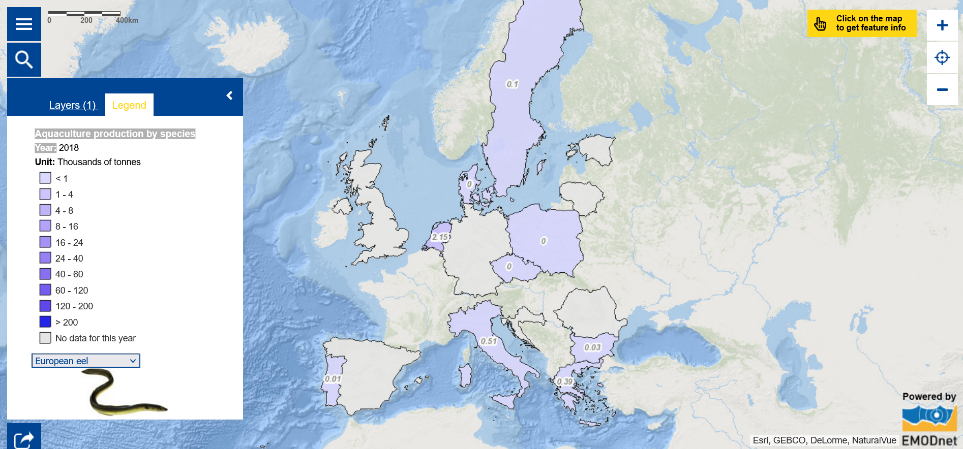Map of the Week – Aquaculture production by species

This week, the European Blue Economy Exhibition Sealogy® took place in Ferrara (Italy). The Blue Economy includes all human activities that use the sea, coasts and seabed as resources for industrial activities and the development of services, such as aquaculture, fisheries, marine biotechnologies, maritime, coastal and cruise tourism, maritime transport, ports and shipbuilding sector, marine renewable energies, included in an environmental sustainability perspective. [1] On 18 November, participants in the EC Conference organised by the European Commission's Directorate-General for Maritime Affairs and Fisheries in coordination with SEALOGY® explored and discussed the importance and the environmental, social and economic benefits of a sustainable blue economy, as well as the support needed in this respect. Last May, the European Commission published a Communication for a Sustainable Blue Economy. Panel discussions focused on three topics:
- The European Green Deal and the new approach for a sustainable Blue Economy
- The socio-economic value of blue ecosystems
- 'Blue' knowledge, skills and innovation for a sustainable blue economy
In the panel dedicated to ’Blue’ knowledge, skills and innovation for a sustainable blue economy, Deputy Head of the EMODnet Secretariat, Dr. Kate Larkin, discussed how marine data can support a more sustainable Blue Economy and the benefits of combined marine knowledge and Ocean Literacy. The European Atlas of the Seas has an important role to play in this framework. Explore the Map of the Week to learn about aquaculture production of several species. Select the species in the map layer’s dropdown list and see the production by country in 2018. Wish to know how production has evolved over the past years? Click on a country to see the related production graph.
Did you know that the European eel (Anguilla anguilla) is a 'catadromous' fish? It spawns and is born at sea, and then migrates into inland waters to eat and grow. The last 20 years have seen a dramatic decline in the number of eels reaching European river systems. The European eel is listed as "critically endangered" under the IUCN Red List. [2] Under the Eel Regulation, European Union countries must implement management plans for the recovery of European eels.
The data in this map are provided by Eurostat.
[1] https://www.sealogy.it/en/
[2] https://ec.europa.eu/oceans-and-fisheries/ocean/marine-biodiversity/eel_en
